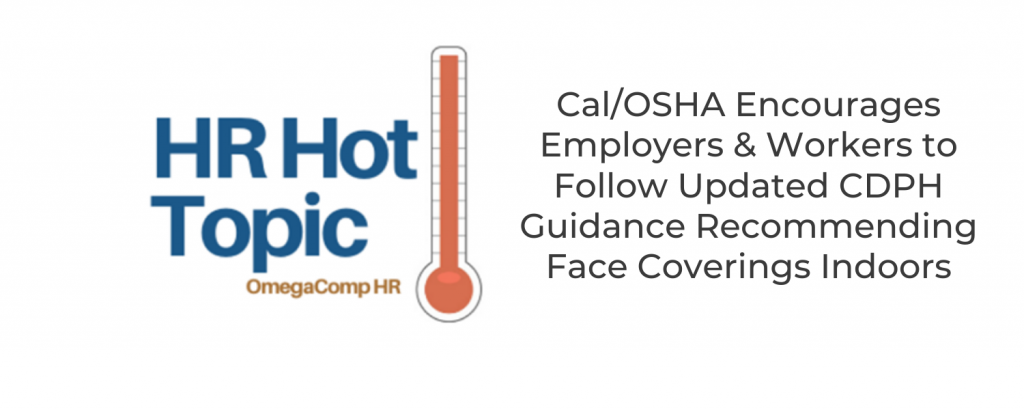HR Hot Topic – Cal/OSHA Reminds Employers to Protect Workers from Unhealthy Air due to Wildfire Smoke
- Admin

-Via The Department of Industrial Relations-
Cal/OSHA is reminding employers that California’s protection from wildfire smoke standard requires them to take steps to protect their workers from unhealthy air due to wildfire smoke. Harmful air quality from wildfire smoke can occur anywhere in the state on short notice, so employers must be prepared before a wildfire event occurs.
There are steps employers must take to protect workers from wildfire smoke, including monitoring the local air quality index (AQI) for PM2.5, training workers on the health effects of wildfire smoke and providing proper respiratory protection like N95 respirators for voluntary use if work cannot be moved to a location where the air is not harmful. If employers cannot move operations to areas where air is adequately filtered and they do not have access to respiratory protection, they may need to halt operations until the outdoor air quality improves. This includes outdoor worksites and indoor locations where the air is not filtered or doors are kept open such as warehouses, packing, manufacturing, distribution facilities and more.
When wildfire smoke might affect a worksite, employers must monitor the AQI for PM2.5 before and throughout the work shift. Make sure to have websites like the U.S. EPA’s AirNow or local air quality management district websites bookmarked for quick access. Employers can also use their own instruments to measure the AQI in accordance with Cal/OSHA’s requirements.
Smoke from wildfires contains chemicals, gases and fine particles that can harm health. The greatest hazard comes from breathing fine particles in the air (called PM2.5), which can reduce lung function, worsen asthma or other existing heart and lung conditions, and cause coughing, wheezing and difficulty breathing.
If the AQI for PM2.5 is 151 or greater, employers must take the following steps to protect employees:
- Communication – Inform employees of the AQI for PM2.5 and the protective measures available to them.
- Training and Instruction – Provide effective training and instruction to all employees on the information contained in section 5141.1 Appendix B.
- Modifications – Implement modifications to the workplace, if feasible, to reduce exposure. Examples include providing enclosed structures or vehicles for employees to work in, where the air is filtered.
- Changes – Implement practicable changes to work procedures or schedules. Examples include changing the location where employees work or reducing the amount of time they work outdoors or exposed to unfiltered outdoor air.
- Respiratory protection – Provide proper respiratory protection equipment, such as disposable respirators, for voluntary use.
- To filter out fine particles, respirators must be labeled N-95, N-99, N-100, R-95, P-95, P-99, or P-100, and must be labeled as approved by the US National Institute for Occupational Safety and Health (NIOSH).
To assist employers with identifying available supplies of respirators, Cal/OSHA is maintaining a list of vendors who have confirmed they have at least 100,000 NIOSH-certified disposable N95 respirators in stock and available for purchase and delivery.
If the AQI for PM2.5 exceeds 500 due to wildfire smoke, respirator use is required. Employers must ensure employees use respirators and implement a respiratory protection program as required in California’s respiratory standard. For information or help on developing a respiratory protection program, see Cal/OSHA’s Respiratory Protection Fact Sheet.
We will continue to provide information and guidance regarding HR-related news. Should you have any questions, please reach out to our Human Resources Department at 916-266-4370.
View original article here: https://www.dir.ca.gov/DIRNews/2021/2021-82.html
